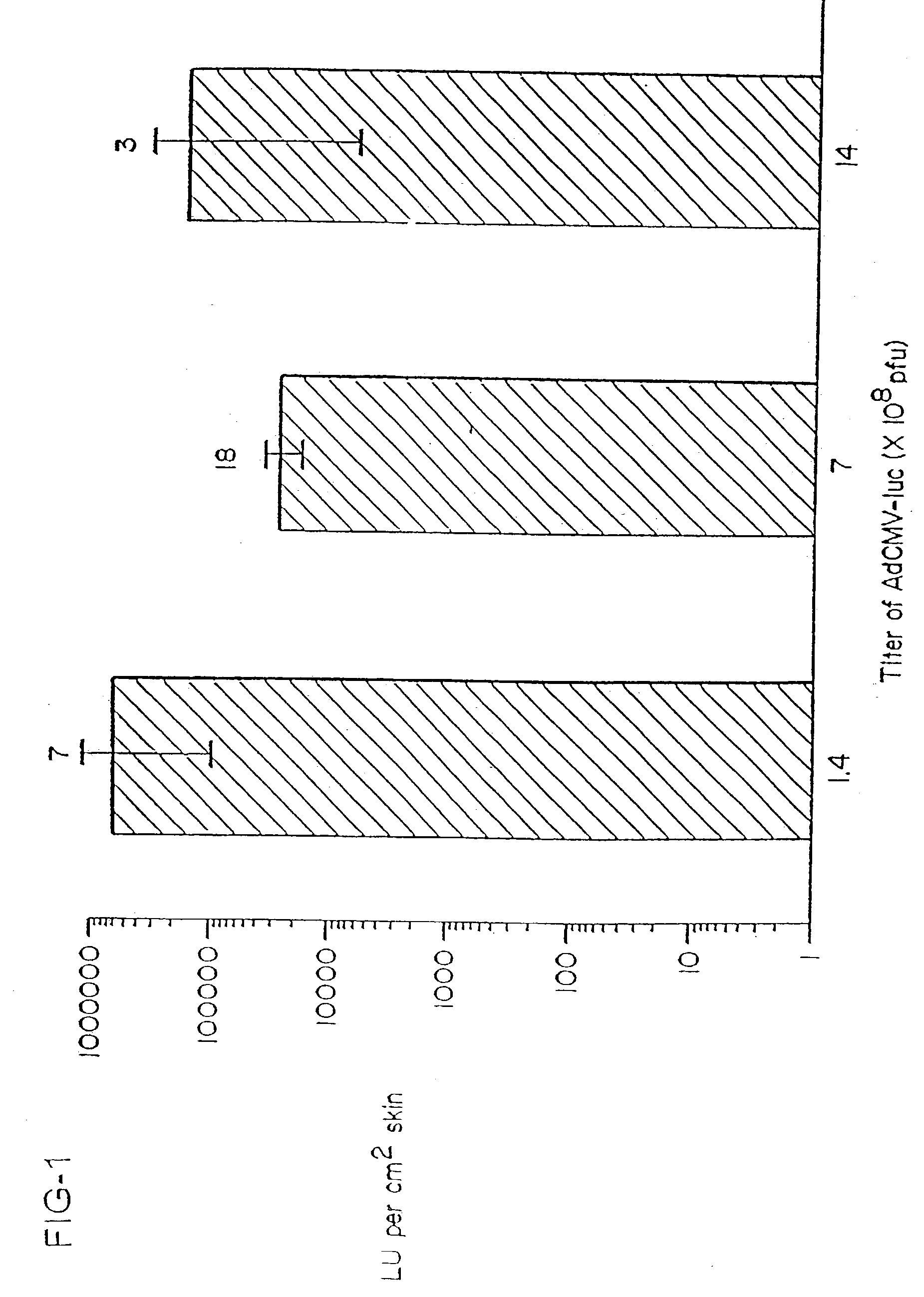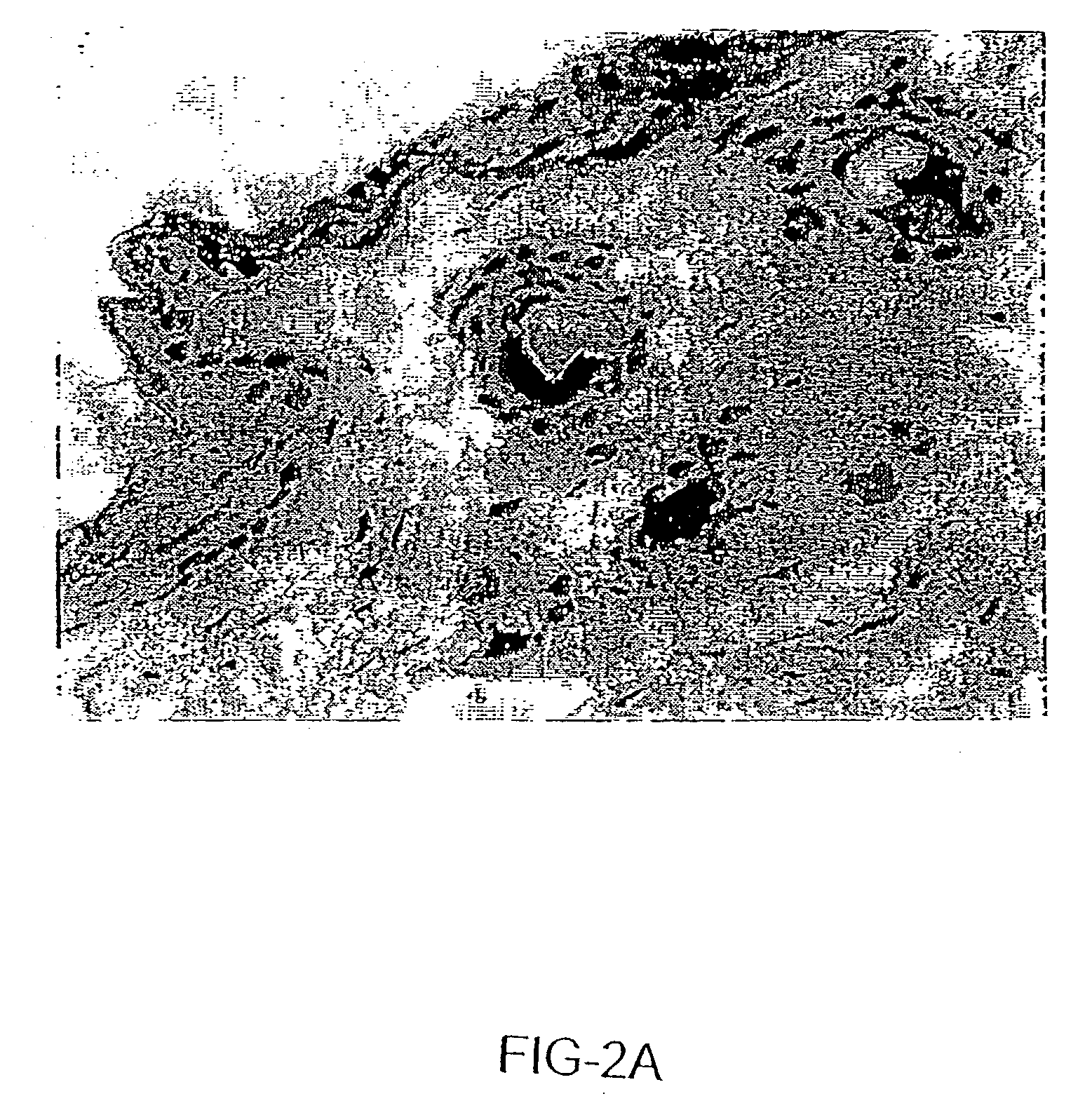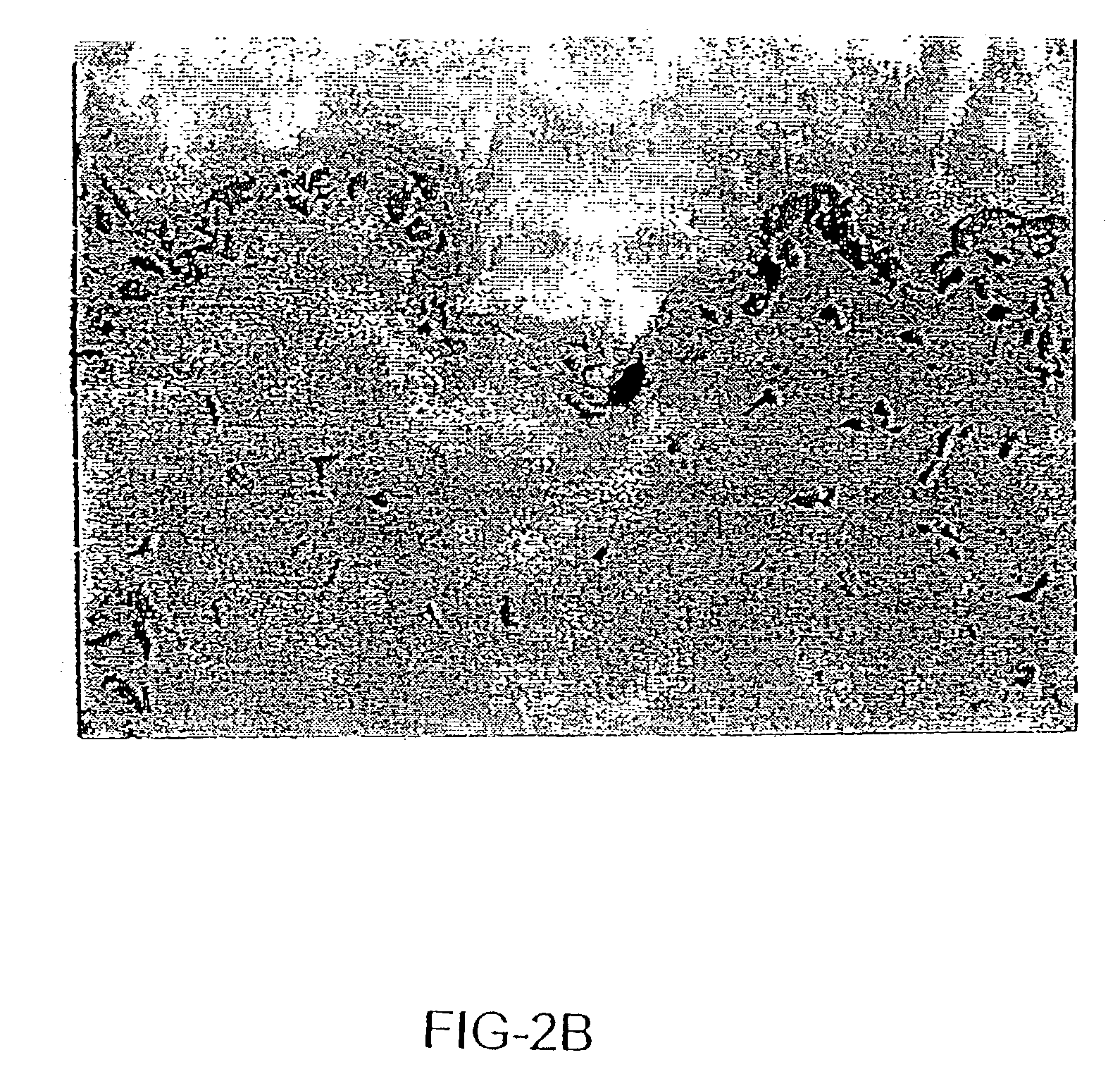Vaccine and drug delivery by topical application of vectors and vector extracts
- Summary
- Abstract
- Description
- Claims
- Application Information
AI Technical Summary
Benefits of technology
Problems solved by technology
Method used
Image
Examples
example 1
[0167] The present invention demonstrates that antigen genes can be delivered into the skin of mice in a simplified manner by skin-targeted non-invasive delivery of a genetic vector without using sophisticated equipment. FIG. 1 shows that substantial amounts of luciferase enzyme was produced after delivery of limited amounts of AdCMV-luc (an adenovirus vector encoding the firefly luciferase) (Tang et al., 1994) onto the skin. Ad, adenovirus; pfu, plaque-forming units; LU, light units. Results are the mean log / LU per cm.sup.2 skin].+-.SE (n is shown on top of each column). Mice mock-applied or coated with an adenovirus vector that did not encode luciferase produced no detectable luciferase activity in the skin. The level of transgene expression from the adenovirus vector in the skin did not appear to correlate with the titer of the virus. It is possible that only a small number of cells can be transduced by the virus in a restricted subset of skin, and 10.sup.8 plaque-forming units (...
example 2
[0168] Without wishing to be necessarily bound by any one particular theory, target cells for non-invasive vaccination onto the skin appear to be epidermal cells, including but not limited hair matrix cells within hair follicles (FIG. 2a) and keratinocytes within the outermost layer of epidermis (FIG. 2b), as shown by staining frozen sections with X-gal substrates after skin-targeted non-invasive delivery of an adenovirus vector encoding the E. coli .beta.-galactosidase gene (AdCMV-gal) (Tang et al., 1994). No physical abrasions were found in the skin tissue subjected to the treatment, and there was no inflammation induced. The skin tissue subjected to non-invasive gene delivery was excised from animals 1 day after pipetting 108 pfu of AdCMV-gal onto the skin, cross sectioned, fixed, and stained with X-gal substrates as described (Tang et al., 1994). FIG. 2a shows the adenovirus-transduced epidermal cells, e.g. hair matrix cells within a hair follicle, x150. FIG. 2b shows the adenov...
example 3
[0169] Elicitation of Humoral Immune Responses by Adenovirus-Mediated NIVS
[0170] NIVS is a novel method for vaccinating animals. To demonstrate that the procedure can elicit a specific immune response against the antigen encoded by the vector, AdCMV-hcea [an adenovirus vector encoding the human carcinoembryonic antigen (CEA)] was pipetted onto the skin of the C57BL / 6 strain mice. Serum from a vaccinated mouse a month after skin-targeted non-invasive delivery of 10.sup.8 pfu AdCMV-hcea was diluted 1:500 and reacted with purified human CEA protein and adenoviral proteins that had been separated in a 5% SDS-polyacrylamide gel, and transferred to Immobilon-P membranes (Millipore). Referring to FIG. 3a, lane 1, 0.5 .mu.g of human CEA; lane 2, 0.5 .mu.g of BSA; lane 3, 10.sup.7 pfu of adenovirus. FIG. 3a shows that the test sera from a vaccinated animal reacted in western blots with purified human CEA protein, but not with bovine serum albumin (BSA), which supports the conclusion that spe...
PUM
| Property | Measurement | Unit |
|---|---|---|
| Time | aaaaa | aaaaa |
| Frequency | aaaaa | aaaaa |
| Time | aaaaa | aaaaa |
Abstract
Description
Claims
Application Information
 Login to View More
Login to View More - R&D
- Intellectual Property
- Life Sciences
- Materials
- Tech Scout
- Unparalleled Data Quality
- Higher Quality Content
- 60% Fewer Hallucinations
Browse by: Latest US Patents, China's latest patents, Technical Efficacy Thesaurus, Application Domain, Technology Topic, Popular Technical Reports.
© 2025 PatSnap. All rights reserved.Legal|Privacy policy|Modern Slavery Act Transparency Statement|Sitemap|About US| Contact US: help@patsnap.com



